
Master the Art of Jigging Fishing: A Beginner’s Guide

Jigging Fishing: Your Next Big Adventure
Jigging fishing is an exciting and engaging form of fishing that relies on the jig, a type of fishing lure. Jigs are designed to create an enticing motion in the water, often mimicking prey animals to attract different types of fish. This style of fishing is popular among beginners and experts alike because it allows for a great deal of control, skill, and variability. In other words, it’s a fishing technique that you can truly make your own.
Reeling in the Benefits: Why Jigging Fishing is Worth Your Time
Learning the technique of jigging fishing is advantageous for several reasons. For one, it’s versatile. The wide range of jig types available makes it possible to catch almost any species of fish in various environments, from freshwater to saltwater, from lakes and rivers to the open sea.
Moreover, jigging can be highly productive. The active, attractive movement of the jig can lure in fish more effectively than some passive fishing techniques. It’s also a cost-effective method of fishing as jigs are often less expensive than many other types of lures.
Finally, jigging fishing is simply fun. The interactive nature of jigging – controlling the motion of the jig, sensing the bite, and reeling in your catch – offers an engaging and satisfying fishing experience that’s hard to beat.
Navigating This Guide: What to Expect
In this article, we’ll be taking a deep dive into the world of jigging fishing. We’ll start with the very basics, exploring what jigging is and what equipment you’ll need. We’ll then move on to understanding water conditions and fish behavior, key knowledge areas that will significantly improve your jigging success.
Following this, we’ll provide a detailed, step-by-step guide to jigging, taking you from setting up your gear right through to reeling in your catch. For those interested in taking their skills to the next level, we’ll also cover advanced jigging techniques.
The article will round off with important safety and ethical considerations you should be aware of when jigging fishing. To ensure you continue your learning journey beyond this guide, we’ll provide resources for further exploration of this fascinating fishing technique. So, let’s cast off and dive into the thrilling world of jigging fishing!
Diving Deep: An Overview of Jigging Fishing
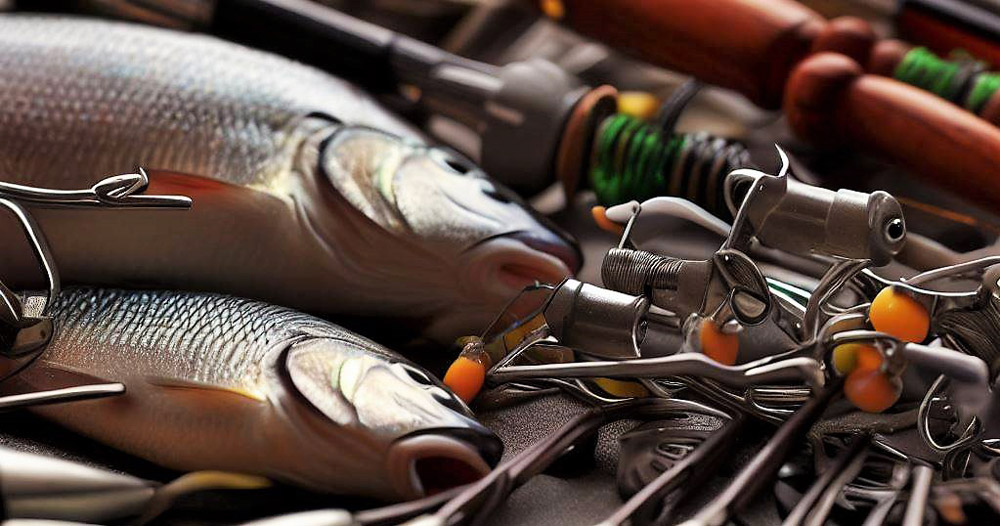
Jigging fishing is a method that involves the use of a jig—a type of fishing lure—which is made to hop, or “jig”, in the water, thereby attracting fish. This technique gets its name from this unique motion. Jigging has been used for centuries, with early forms of the technique dating back to ancient times. It gained significant popularity in the mid-20th century and has been evolving ever since, with various types of jigs and methods being developed to suit different fishing environments and target species.
Exploring the World of Jigging: Its Many Faces
There are various types of jigging, each suited to different environments and target species. These include:
- 🐬Vertical Jigging: This method is often used in deep water situations. The jig is dropped straight down into the water and then jerked up and down by moving the rod.
- 🐬Cast and Retrieve Jigging (or Horizontal Jigging): In this approach, the jig is cast out and allowed to sink. It’s then retrieved in a series of hops and pauses.
- 🐬Slow-Pitch Jigging: This is a newer method developed in Japan. It involves a rhythmic, less aggressive jigging motion that’s effective for attracting a wide range of species.
Gear Up: Essential Tools for Successful Jigging Fishing
To get started with jigging fishing, you’ll need some essential equipment:
🌊The Right Rod: Making the Best Choice
Jigging rods need to be strong enough to handle the weight of the jig and the fight of the fish but sensitive enough to feel a bite. The ideal rod length and power depend on the type of jigging you’re doing and the species you’re targeting. For instance, a shorter, sturdier rod is better for vertical jigging in deep water, while a longer, more flexible rod is suitable for casting jigs in shallow water.
🌊The Jig is Up: A Closer Look at Types of Jigs
There’s a wide variety of jigs to choose from, and the right one depends on the conditions and the species you’re after. Some common types include round-head jigs, shad jigs, flipping jigs, and swim jigs. Each type is designed with a specific purpose in mind, such as mimicking a certain type of prey or moving in a certain way.
🌊Be Prepared: Other Gear You’ll Need
Aside from the rod and the jig, you’ll also need a good reel, fishing line, and possibly a leader line if you’re fishing in a location with sharp rocks or toothy fish. You should also consider safety gear, such as a life vest if fishing from a boat, and a tackle box to keep your gear organized.
Understanding the Water and the Fish
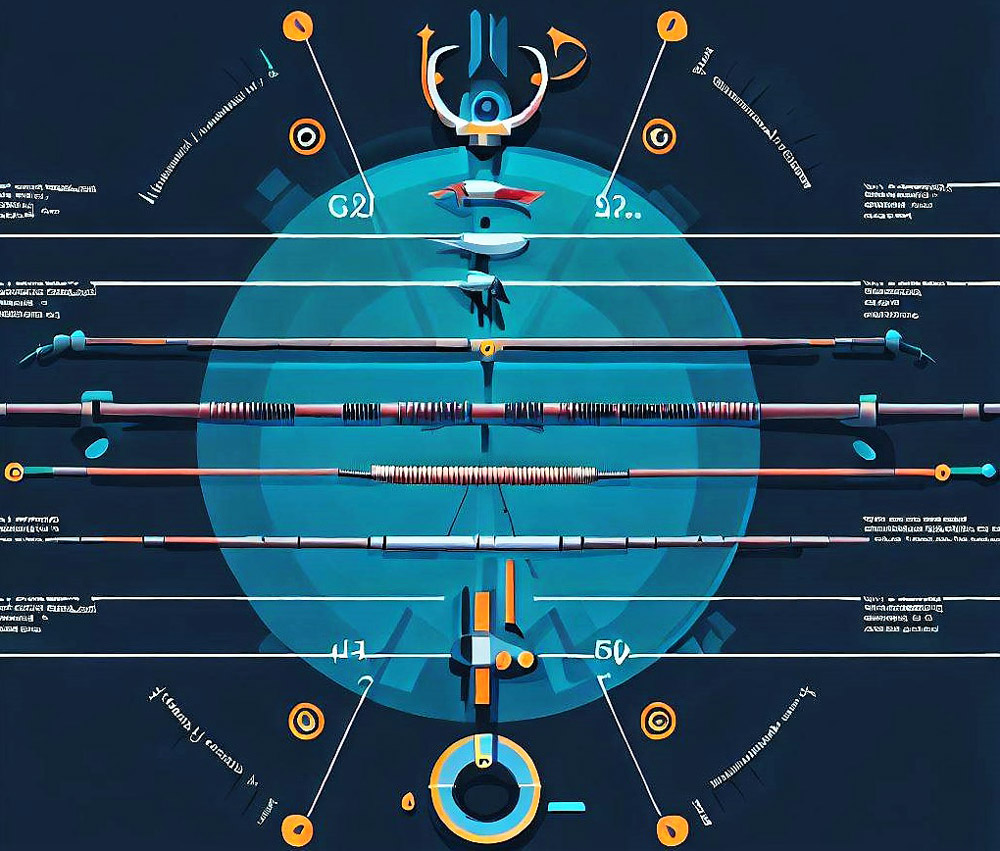
Reading the Water: A Fundamental Skill
Understanding the water conditions can significantly improve your success in jigging. First, consider water clarity. In murky water, brightly colored or glowing jigs can be more visible to fish. In clear water, a more natural, subdued color might be better.
Next, consider the water depth and bottom structure. Some fish prefer deep, rocky environments, while others prefer shallow, sandy areas. Try to match your jigging style and jig choice to the environment.
Current and water temperatures also play a role. Some fish are more active in warmer water, others in colder water. Similarly, some fish prefer to stay in strong currents, while others seek out calmer water. Observing these conditions can help you determine where to cast your jig.
Understanding Your Aquatic Adversaries: Fish Behavior 101
Different fish species have different behaviors, and understanding these can help you refine your jigging technique. Some fish are aggressive and will chase a fast-moving jig, while others are more cautious and might be attracted to a slow, subtle jig movement.
You’ll also need to know where your target species is likely to be in the water column. Some species are bottom-dwellers, others prefer the middle depths, and some stay close to the surface. Choose your jigging style and jig weight accordingly to reach the right depth.
Timing is Everything: When to Go Jigging Fishing
The best time for jigging fishing can depend on several factors. Generally, early morning and late afternoon are good times of the day, as many fish species are most active during these periods.
The time of year also matters. For example, in colder regions, some fish species are more active and closer to the shore during the warmer months, making these the best times for jigging.
However, the specific best times can vary by species and location. It’s worthwhile to research your target species and local fishing reports to get a sense of the best timing for your jigging fishing trips.
How does Jigging in Fishing Work?
Jigging is a method of fishing that involves using a type of lure called a jig. The jig consists of a lead sinker with a hook molded into it and is usually covered by a soft body to attract fish. Here’s how it generally works:
- Setup: You start by attaching the jig to your fishing line. The weight and design of the jig will depend on the type of fish you’re targeting and the depth at which they’re located. The depth of water and type of bottom structure will also influence the size and style of jig that you use.
- Casting: Once your jig is set up, you cast your line out into the water. In saltwater, this often means dropping the jig straight down from a boat, though you can also cast outwards if you’re fishing from shore or in shallower water.
- Working the Jig: Once the jig hits the desired depth, the key part of jigging begins – working the jig. This involves moving your rod tip up and down, causing the jig to move through the water in a similar manner to the movements of the prey of the fish you’re targeting. The specific action varies depending on the species of fish and the type of jig, but it typically involves a series of quick, jerking motions.
- Bite Detection: As the jig moves up and down, it catches the attention of fish, which are then likely to bite. Because the line is typically kept fairly tight during jigging, bites can be detected by a noticeable tug or change in the line’s behavior.
- Setting the Hook and Reeling In: Once you feel a bite, you’ll quickly set the hook by pulling up on the rod, then begin reeling in. Depending on the fish’s size and strength, this can either be a quick and easy process or a significant battle.
The key to successful jigging is to make the jig mimic the type of prey that the fish are eating. This involves choosing the right jig and using the correct movement techniques to give the jig a life-like action in the water. With practice, you can get better at understanding what works best for the fish you’re trying to catch and become more successful at jigging.
How to Jigging Fishing for Beginners
Jigging is a form of sport fishing that now brings thousands of anglers together and the technique is gaining more and more followers. Before you start practicing this method, you should clearly understand all the advice I will give you in this article. Here I will tell you more about jig fishing, and we will also elaborate on the rod for this type of fishing. The best jigging rod is the key to successful fishing.
What Is Jig Fishing
This type of spinning fishing gets its name from the similarity of the bait’s movement in the water to the jig dance. Jig fishing is done with sharp and jerky movements with short pauses in the wiring. Control of artificial fish wiring is provided by special spinning rods with a sensitive structure of the blade. This type of fishing is possible on a fairly clean bottom, not cluttered with trash, snags, and underwater vegetation. The best place to fish is on a relatively firm bottom.
Jigging gets its name from the type of bait used: “jig”. It consists of a molded hook, usually leads, in the shape of a fish. The jigs are designed to recreate the vertical movement of the fish as it comes to the surface, so this technique is also called ‘vertical fishing’. This type of fishing allows access to a large number and variety of fish. Jigging consists of freely casting the bait to the seabed and returning it at a constant rate using the line and rod movements. This mimics the trajectory of small fish towards the surface and serves as bait to catch larger fish.
Where Can I Jig
Jigs can be fished from both shore and boat. The shore-based method is the easiest, but it has limitations. The best place for jig fishing from the shore is the rivers. There is usually no high grass or other obstacles for the bait. The ripples are notable for the possibility of catching almost any fish as they go after insects, which are especially plentiful in warm, well-lit water.
During the day on the rifts, it’s best to use dark-colored baits. Black and red jig baits are most visible against the light, sandy river bottom. The most common technique used when fishing from the shore is the step-wire technique.
There is also jig fishing from a boat. This is one of the most popular fisheries, characterized by mobility and access to any location on the body of water. There is another advantage of fishing from a boat. With the onset of cold weather, the predator moves further away from shore in search of holes and deep places. The bait in the fall intensifies, the fish before the long winter start to go on a feeding spree. It would be unforgivable to miss such a moment. To jig from a boat is not that difficult, but the basic knowledge should be. To begin with, it is necessary to master the technique of casting, because it is difficult to do it from the boat, swaying on the waves, if you lack experience.
To throw a tackle from the stern, you need to get in front of it and, importantly, make sure that the throw is safe for your colleague. The side throw is made with a single-handed rod. The swing is made from below upwards with a slightly bent arm which after the throw is straightened in one line with the spinning rod and line.
Over the head, it is more convenient to throw the bait with a two-handed arm. In the same way, it is possible to cast without standing up. In any case, it is necessary to hold the line at the last moment before reeling in to avoid beards.
Once the bait has started to sink, it is necessary to wait for the line to sag. The reel is held at a forty-five-degree angle. A coil winding is done, three or four turns of the handle, pause, the process is repeated. Stepped wiring can have different options.
There is a curious way of fishing on an unknown river. Throwing is done with massive baits, throwing them as far as possible. Once you manage to find the pikeperch, jig weight is reduced, and the wiring becomes more measured. Equipping a tackle jig head, you must not forget about its weight and shape. The weight can vary from one gram of micro lures to a hundred grams.
Weights in the 1 to 4 g range are for lures from 1 to 5 cm. The line should not exceed 0.1 mm, otherwise, the line cannot be controlled. Smallmouth bass and chub are caught. Common weights are 5 to 20 g. Catch them possibly not only in shallow waters but the depths of 15 m. The current strength plays a significant role in the choice of bait weight: the faster the water moves, the heavier the weight is mounted on the bait.
The Basic Principle of Jig Fishing Technique Every Angler Should Know
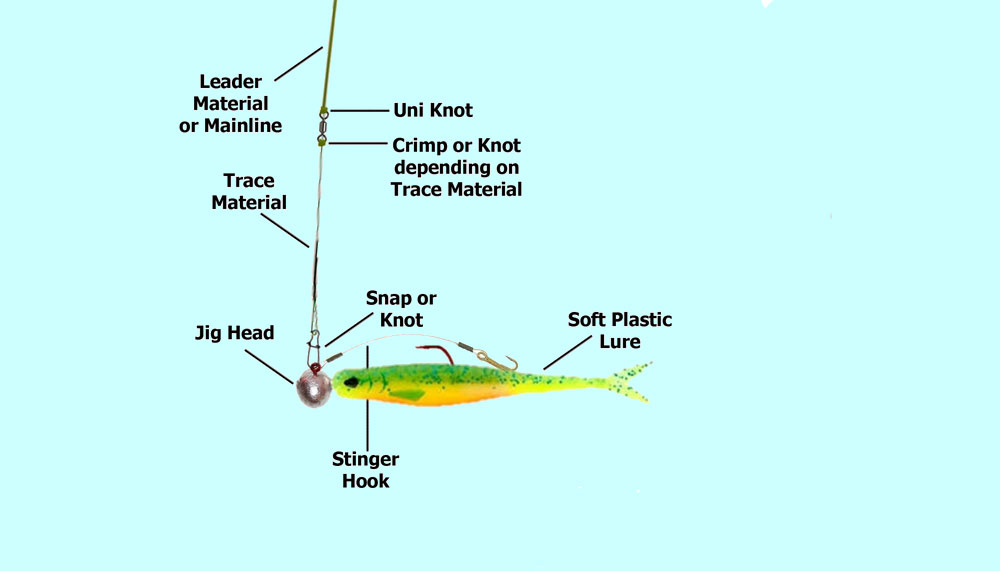
In this section, I would like to take a closer look at jig fishing techniques and explain some of the differences from other fishing techniques.
Jigging involves bouncing the bait on the bottom. When jigging, you lift the bait with the tip of the rod. It usually jumps high and far, giving the impression of a nimble fish. This method is especially promising in warm seasons, such as spring and summer, when all fish feed a lot, hunt a lot, and therefore generally move around a lot.
When trolling, the bait is lifted from the bottom with one or two turns of the fishing reel handle, with the rod tip remaining stationary. As a result, the rubber fish bounces above the bottom much more evenly than in jig fishing. This method is more suitable for colder seasons, when the fish are sluggish and hardly move, and strongly bouncing bait will only irritate it.
Both when jigging and trolling, the bait bounces over the bottom. When jigging, you move it with the tip of the rod; when trolling, you move it by turning the reel handle.
The bouncing motion of the lure is much smoother when trolling than when jigging. This is the most important difference between these two methods of fishing, which at first glance seem to be similar. Both techniques require completely different dynamics in the way the bait is wired, which ultimately determines the success of the fishing.
Reels for Jig Fishing
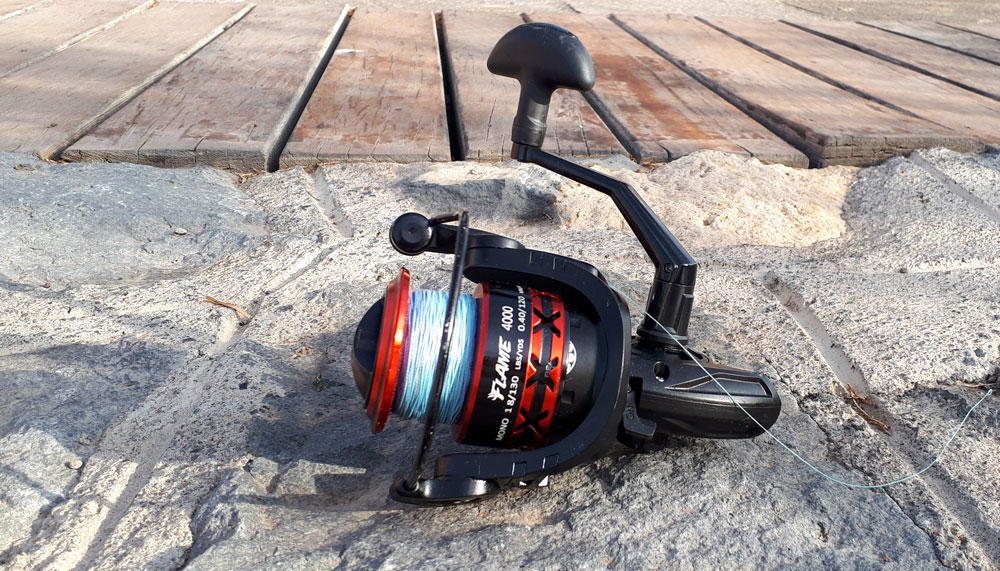
A beginner angler for shore-based jigging may be advised to use an inertia-free front-friction reel in the Shimano classification of 2000-3000. Experienced fishermen use multipliers, especially with the heavy jig, but they are difficult to master and expensive. As a rule, the shore jig does not require high-speed wiring, so the reel must be more traction than high-speed. A gear ratio in the 4-5 range is desirable.
The Line for Jig Fishing
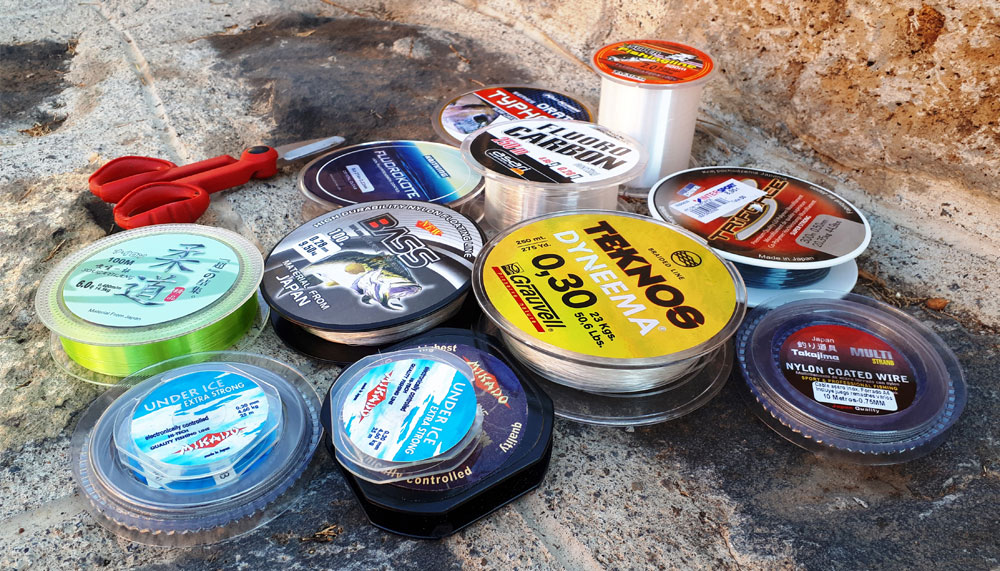
Good quality jigging line is one of the keys to successful fishing. It’s critical for jig fishing. To feel even a tentative bite, the bottom topography, the behavior of the bait, jigging uses braided cord, they have minimal stretch. A good braided cord has a cross-section close to round, a tight weave, and a smooth surface. The color of the cord itself does not play a big role. The thickness should be chosen based on the weight of the lure and the intended fish; 0.15-0.40 mm may be considered universal.
Popular Jig Baits
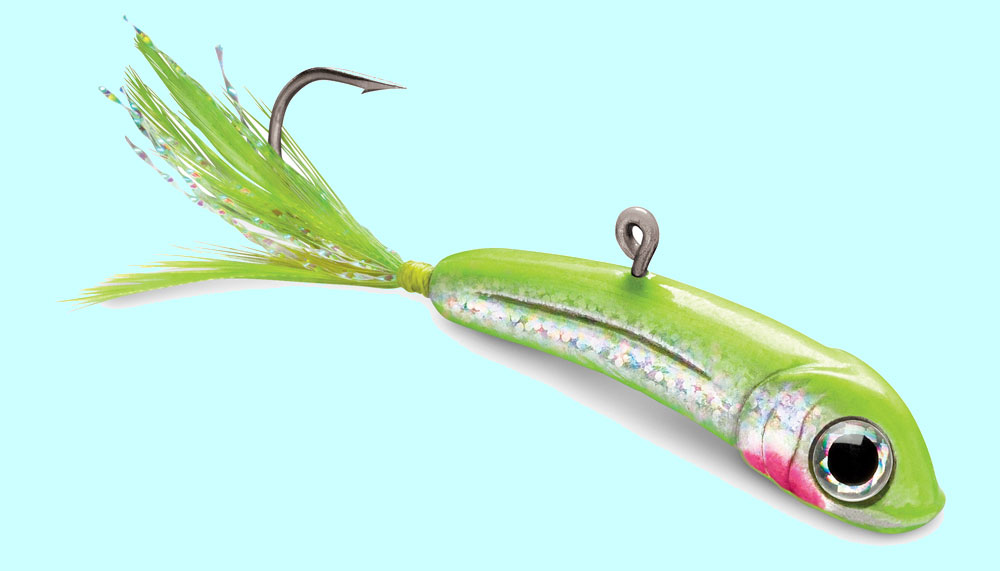
Metal baits for jig fishing. Metal baits for jig fishing. Metal jigs, or jig baits, as they are also called, are made of lead alloys, have a variety of shapes, and are painted in more or less realistic colors. Their task – as closely as possible to reproduce the fish fry, which the predators eat. Most often lures for jigging are equipped with a tee on the tail, but nothing prevents you to replace it with a simple single hook in case you catch it in the “hard” places. Jigging lures exist in different sizes and weights depending on the object of the hunt and the depth of the catch.
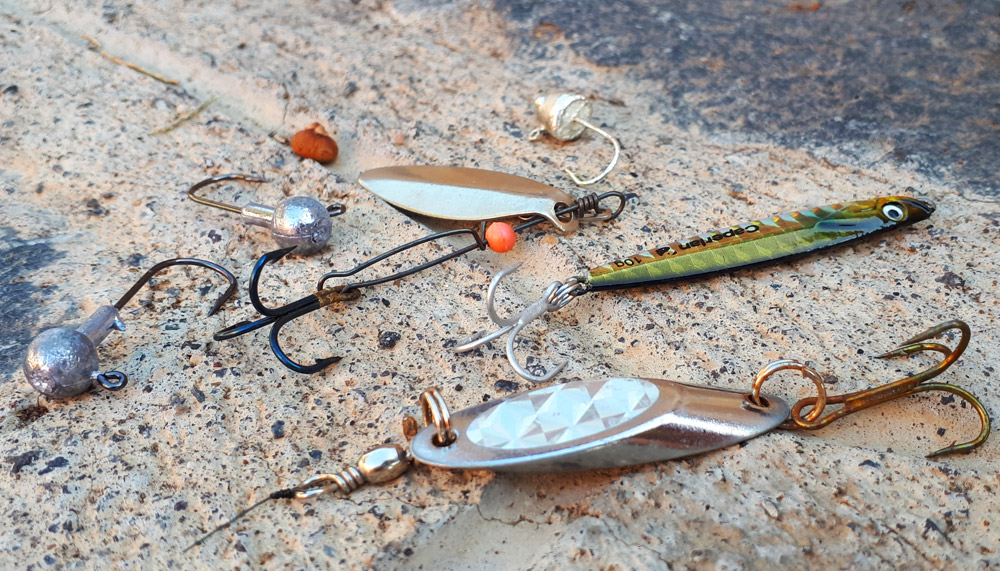
Silicon baits for jig fishing. The most popular baits are silicone models. Silicon lures in turn can also be divided into two main types – vibrotails and twisters. There are also other types of silicone baits, but they are mostly hybrids of a twister with a wobbler or an imitation of small underwater creatures.
Foam rubber baits for jig fishing. No less popular lures for jig fishing are products of foam rubber. Most often it is a homemade foam fish. Porolon won its popularity due to the cheapness of the material and ease of manufacture. It is not very difficult to make a bunch of foam rubber fishes with their own hands at home. In addition, these lures are not bad to catch fish. There are occasions when the foam baits are simply indispensable for fishing.
Step-by-Step Guide to Jigging Fishing
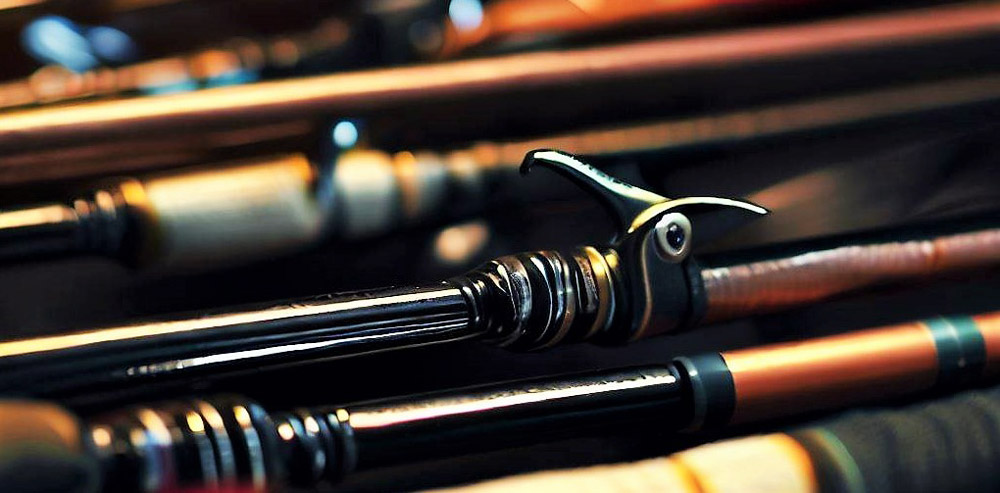
Getting Ready: Setting up Your Gear
Before you can start jigging, you’ll need to set up your gear. First, attach the reel to the rod. Next, thread your fishing line through the guides on the rod and onto the reel. Make sure the line is taut and doesn’t have any twists or tangles. Then tie your jig to the end of the line using a secure knot such as the Improved Clinch Knot or the Palomar Knot. Make sure the knot is snug and the jig hangs straight down when held up. If you’re using a leader line, connect this between the main line and the jig.
Making a Splash: Techniques for Casting Jigs
Casting your jig involves throwing it out into the water to the spot where you want to start fishing. Aim to cast beyond where you think the fish are and retrieve the jig back through the target area. Keep your eyes on the spot where you want the jig to land, then smoothly but swiftly swing your rod toward that spot while releasing the line from your other hand. With practice, you’ll get a feel for how hard to cast to get the distance you want.
Working It: How to Maneuver the Jig Like a Pro
Once the jig is in the water, it’s time to ‘work’ it. This involves moving the jig in a way that makes it attractive to fish. The specific technique can vary depending on the type of jigging you’re doing, but generally, it involves a combination of lifting the rod to move the jig upwards and then allowing it to sink back down, which is often when a fish will strike. Remember to keep your movements smooth and rhythmic, and try varying the speed and depth of your jigging until you find what works.
On the Alert: Detecting a Fish’s Bite
Detecting a bite can be a challenge, especially for beginners. It often feels like a slight tug or a sudden weight on the line. Keep a firm grip on your rod and pay close attention to any changes in the feel of the line. Some anglers keep a finger on the line to better feel these subtle signs. If you think you feel a bite, it’s often better to set the hook than to hesitate and possibly miss a fish.
The Big Catch: Reeling in Your Prize
Once you’ve got a fish on the line, the fight is on. Keep the line taut and start reeling in, but be ready for the fish to fight back. If the fish pulls hard, let it take some line out, then reel in again when it stops pulling. This can be a back-and-forth process that requires patience. When the fish gets close, be ready with a net to land it. Congratulations – you’ve made your catch! Always handle fish carefully and respectfully, especially if you plan to release them back into the water.
Advanced Jigging Techniques
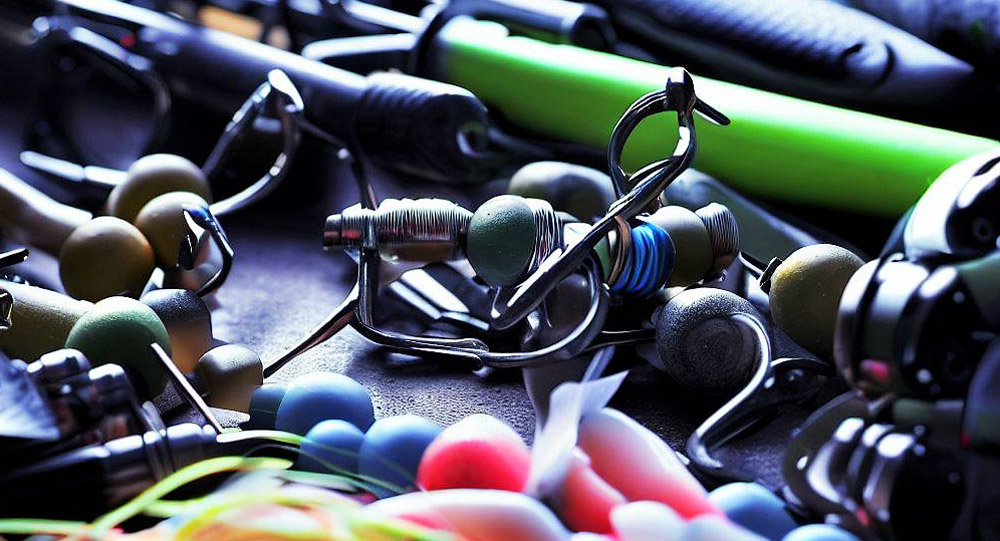
Vertical vs. Horizontal Jigging: A Comparative Study
As you become more experienced with jigging, you’ll likely develop a preference for either vertical or horizontal jigging, or find situations where one is more effective than the other.
Vertical Jigging involves dropping your jig straight down into the water and then moving it up and down with a jerking motion. This method is particularly effective in deep waters where fish are likely to be near the bottom. It’s also advantageous when fishing from a boat, as it allows you to reach depths that would be difficult to achieve with a cast.
Horizontal Jigging, also known as cast and retrieve jigging, involves casting your jig out and retrieving it with a hopping motion. This method is effective in shallower waters and when you want to cover a larger area. It allows you to draw the jig through the water at varying speeds, which can entice different species of fish.
Riding the Slow Pitch: An Introduction to Slow Pitch Jigging
Slow Pitch Jigging is a method that was developed in Japan and has been gaining popularity around the world. Instead of the fast, aggressive motion used in traditional jigging, slow-pitch jigging involves a slower, more deliberate motion. The aim is to make the jig imitate a wounded prey animal, which can attract a wide range of predatory fish. This method can require more patience but can also be highly rewarding. Slow-pitch jigging often requires specific rods and jigs designed for this technique.
Species-Specific Techniques: Up Your Jigging Game
Different species of fish have different behaviors and preferences, and adjusting your jigging technique can help you target specific species. For example, some species are attracted to a fast-moving jig, while others prefer a slower, more subtle motion. Some species tend to stay near the bottom, requiring a heavy jig and deep vertical jigging, while others are found in mid-water or near the surface, requiring a lighter jig and more horizontal jigging.
Furthermore, the size and color of your jig can also influence which species you attract. Bright, flashy jigs might attract aggressive, predatory fish, while smaller, subtler jigs might attract more cautious species. It’s worth researching the species you’re targeting to learn about their habits and preferences, and adjusting your jigging technique accordingly.
What is The Best Fishing Rod for Jigging?
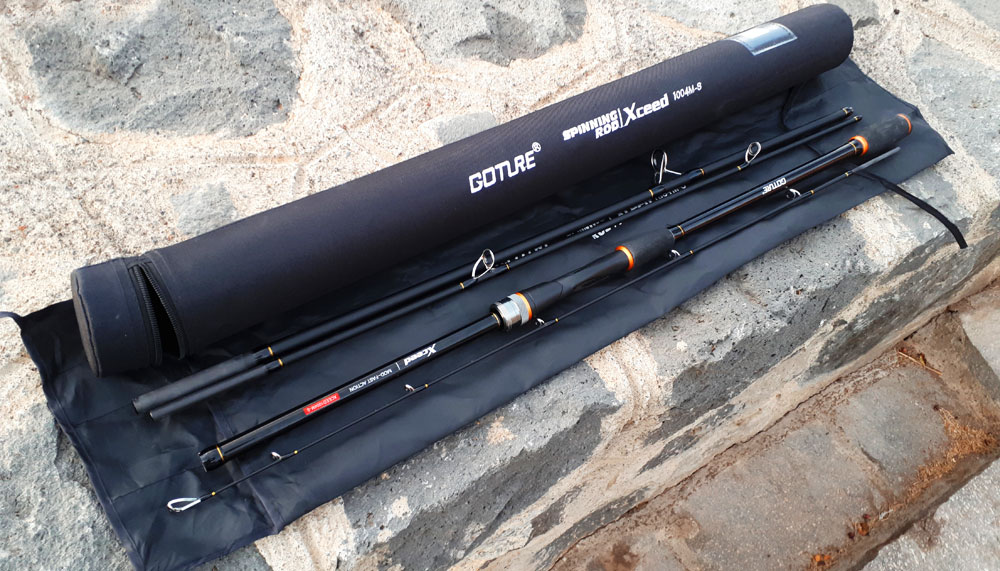
In this article, I have also devoted a large section to the choice of Jigging Rod. This is an important tackle without which you realize you won’t get anywhere. I advise you not to choose by price but by performance. You will be able to find a worthy option in the expensive segment as well as in the more budget-friendly one. But price should not be the decisive factor. Choosing only by price, you will most likely come back for a second, better rod in characteristics.
I have selected for you the best models on the market, with which you can easily master jig fishing. But before I go on to review them, I suggest you read a quick guide on how to choose a rod for this type of fishing.
And so, in inshore jig fishing, the promising points are often far away from the angler. Therefore, casting distance is very important. Therefore, the spinning rod should be long enough. On water bodies up to 50 m wide, the rod length should be at least 2.2 m. On wider waters, it should be 2.4-2.7 m. In addition to long casting, a long rod allows you to control the bait, feel the bite, make a good hook at a long distance, and fish out.
As for the rod test, I recommend choosing a model based on the weight of the bait you will be using. The bait’s drop to the bottom should be felt by the spinning rod. Lures weighing up to 5-6g are ultra-light and require rods with the appropriate test. These rods are usually used on small rivers and reservoirs with standing water. Mostly shore jigging rods with a test of 5-35 grams are used. They allow anglers to fish comfortably in most places accessible from the shore.
If it is possible to fish from the shore in deep holes on large rivers with strong currents, you can use blanks with a test of up to 50-60 g.
As for rod action, fast and ultra-fast action are most commonly used. A rigid rod allows it to force-fish near snags, bushes, and rocks. A rigid rod also gives a good hook to fish over long distances when the line is bent by the current or wind.
Selecting the best fishing rod for jigging largely depends on the type of fishing (saltwater or freshwater), the targeted species, and personal preferences. That said, there are some rods that are highly respected in the fishing community for their jigging performance. Here are a few:
- Shimano Trevala Spinning Rod: Shimano’s Trevala series is well-known for its strength and sensitivity. These rods are designed specifically for jigging and work well with both traditional and butterfly-style jigs. The rod’s high-quality construction ensures that it’s durable and can handle a variety of fishing conditions.
- Penn Carnage II Jigging Spinning Rod: The Penn Carnage II is a popular choice among many saltwater anglers. This rod is lightweight yet incredibly strong, thanks to its one-piece graphite construction. It offers great sensitivity, allowing you to feel even the subtlest bites.
- Daiwa Saltiga G Boat Jigging Rod: The Saltiga series from Daiwa features a range of heavy-duty rods built for saltwater jigging. They have a strong backbone for battling big fish but also maintain good sensitivity for detecting bites.
- Ugly Stik Elite Spinning Rod: For those on a budget, the Ugly Stik Elite series offers great value for money. These rods are known for their durability and versatility. They may not be as specialized for jigging as some of the other options, but they can certainly get the job done.
- G. Loomis E6X Jig & Worm Spinning Rods: If you’re primarily interested in freshwater jigging, especially for species like bass, the G. Loomis E6X series is an excellent option. These rods are known for their sensitivity and precise casting abilities.
Remember, the best rod for you will depend on your specific needs and preferences. Factors to consider include the rod’s power (how much weight it can handle), action (how much the rod bends when pressure is applied), length, and budget. Always choose a rod that feels comfortable to you and suits your style of fishing.
What are The Best Jigging Fishing Lures?
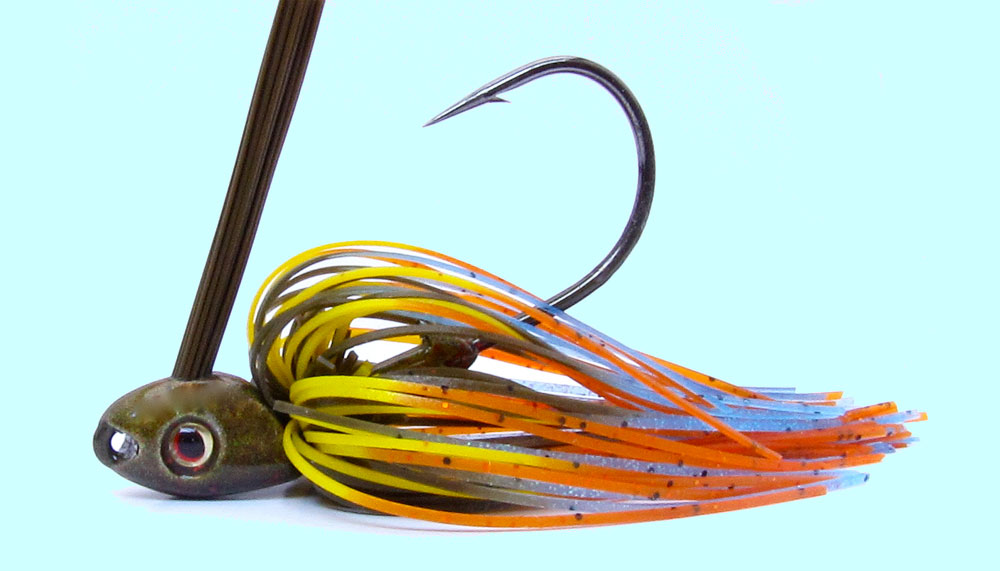
Choosing the best jigging fishing lures depends on various factors like the target fish species, fishing location, and water conditions. However, some jig lures have gained popularity due to their versatility and effectiveness.
Here are some of them:
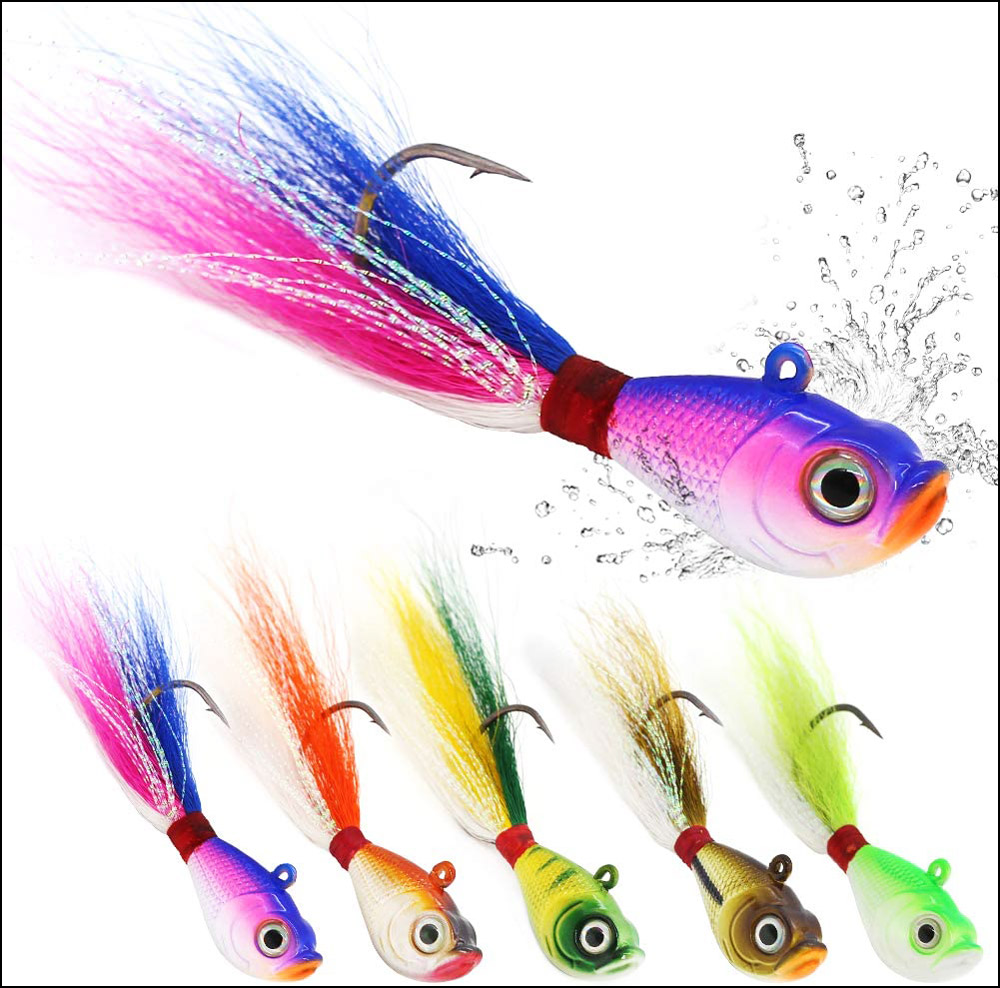
- Bucktail Jig: The Bucktail Jig is a versatile lure that can be used in both saltwater and freshwater fishing. The hair-like material flutters in the water, mimicking the movement of baitfish. They come in various sizes and colors, making them suitable for many fish species.
- Rapala Flat Jig: Specifically designed for deep water and strong currents, the Rapala Flat Jig is excellent for reaching fish that other lures can’t. Its flat design enables it to sink quickly and resist drag in the water, making it a favorite among many anglers.
- Shimano Butterfly Flat-Fall Jig: This lure is designed to fall with a slow, enticing action and to respond well to jerk-and-pause retrievals. It’s excellent for deep-water jigging and is particularly effective for species like snapper, grouper, and tuna.
- Spro Bucktail Jig: Another variant of a bucktail jig, the Spro Bucktail is well-regarded for its durability and enticing flutter action. It’s a good choice for species like bass, walleye, and even smaller saltwater species.
- Boone Squid Skirt Jig: This lure is commonly used for saltwater jigging and comes in a variety of vibrant colors. Its lifelike action and appearance are highly effective for attracting a range of saltwater species.
- Berkley Gulp! Alive! Jigging Grub: For freshwater fishing, especially targeting species like bass, the Berkley Gulp! Alive! Jigging Grub is a popular choice. It’s realistic action combined with Berkley’s Gulp! scent attractant can be irresistible to many fish.
- Daiwa Salt Pro Minnow Bullet: This is a fast-sinking lure, ideal for strong currents and high wind conditions. Its streamlined design allows for longer casting distances and quick, deep retrievals.
Remember, the effectiveness of these lures can vary depending on how they’re used. So, it’s crucial to understand the behaviors of the fish you’re targeting and adjust your technique accordingly.
What is The Best Fishing Line for Jigging?

Choosing the right fishing line for jigging is crucial, as it affects casting, lure action, and sensitivity to bites. There are three main types of fishing lines: monofilament, fluorocarbon, and braided. Each has its strengths and weaknesses.
- Braided Line: Braided line is popular among many jigging anglers due to its high strength-to-diameter ratio, allowing for a thinner line with the same test strength. It’s highly sensitive, with very little stretch, making it easier to detect bites. However, its high visibility in water might scare off some fish. Examples of good braided lines for jigging include the PowerPro Spectra Fiber Braided Fishing Line and the Spiderwire Braided Stealth Superline.
- Monofilament Line: Monofilament line is easy to handle and has some stretch, which can be useful when battling fish. It’s less visible in water compared to braided lines but has a thicker diameter and less abrasion resistance. It’s also generally cheaper than other line types. An example of a reliable monofilament line is the Berkley Trilene Big Game Monofilament Custom Spool.
- Fluorocarbon Line: Fluorocarbon line is practically invisible in water, which can be a significant advantage in clear water conditions. It’s also quite dense, allowing for a quick descent. It’s often more expensive than monofilament but offers excellent abrasion resistance. Seaguar Blue Label Fluorocarbon Leader is a popular choice among many anglers.
For jigging, many anglers prefer to use braided lines because of their sensitivity and strength. This is particularly important in deep water jigging, where sensitivity to light bites can make a big difference. However, it might be beneficial to use a fluorocarbon leader for reduced visibility, especially when fishing in clear waters or targeting line-shy species.
As always, the choice depends on your personal preference, the species you’re targeting, and the specific conditions in which you’ll be fishing.
Safety Measures and Ethical Considerations
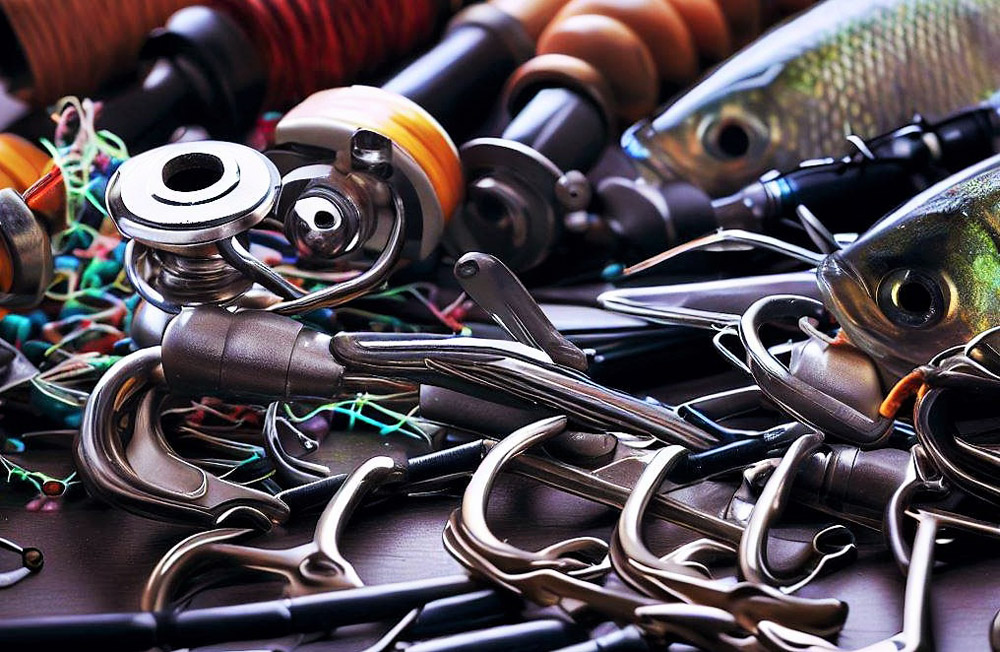
Safety First: Key Guidelines for Jigging Fishing
Safety is a paramount concern in all forms of fishing, and jigging is no exception. Always wear a personal flotation device when fishing from a boat. Moreover, remember that jigs can be heavy and sharp, so handle them carefully to avoid injury. When casting, always check your surroundings to ensure that your jig won’t hit anyone or anything.
Maintaining a secure footing, whether on a boat deck or a slippery riverbank, is crucial. Always carry a first aid kit in case of minor injuries. If you’re out in the sun, wear sunblock and stay hydrated. Lastly, always let someone know where you are going and when you plan to return.
A Respectful Angler: Ethical Considerations and Good Practices
As anglers, we have a responsibility to treat the environment and the fish we catch with respect. This includes practicing catch and release, especially for species that are not intended for consumption or are under threat. When handling fish, wet your hands first to minimize damage to their protective slime coating, and try to remove hooks gently and swiftly.
Avoid leaving behind any form of trash, especially fishing lines or other gear that wildlife can get entangled in. Respect other anglers’ space and avoid overcrowding fishing spots. Remember, fishing should be a sustainable activity that can be enjoyed by future generations.
Staying on the Right Side: Local Fishing Regulations
It’s crucial to understand and adhere to local fishing regulations, which are put in place to maintain healthy fish populations and habitats. These can include rules about seasons, bag limits, size limits, and gear restrictions. Fishing licenses are usually required and the fees often go towards conservation efforts. You can generally find this information through local wildlife agencies or fishing shops. By respecting these rules, you’re helping to ensure that we’ll all be able to enjoy fishing for years to come.
FAQ: Your Essential Guide to Jigging Fishing
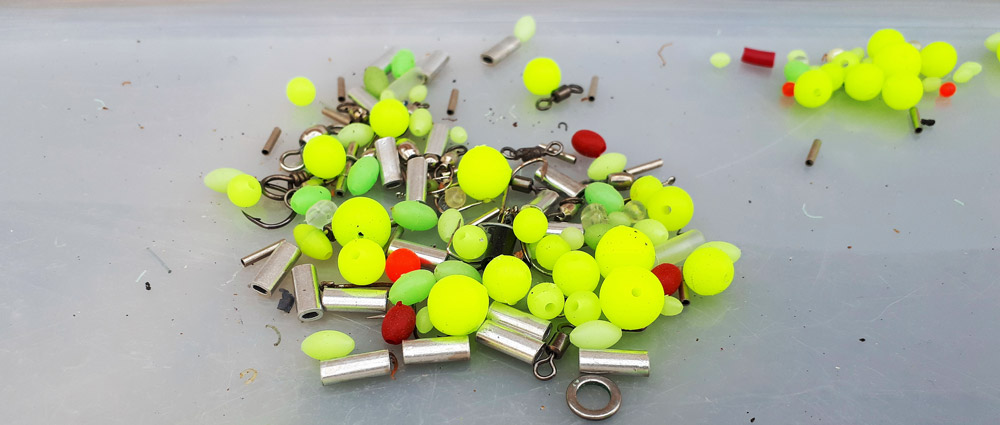
Conclusion: Your Guide to Fishing Like a Pro
Jig fishing for beginners starts with a lot of questions. And there is a reason for the interest in this fishing, on the one hand, it is not difficult to master, on the other hand, it is capable of bringing in decent catches. Any preparation for fishing begins with the choice of the fishing rod. A jig fishing rod should be powerful enough, have long-range, help control the bait and be as sensitive to bites as possible. In this article, I have told you about 9 cool rods you can use for Jigging Fishing Technique. I hope that my article has not only helped you learn more about this type of fishing but has also answered all of your questions!
Looking Back: A Recap of Our Jigging Journey
Throughout this article, we’ve covered the basics of jigging fishing, from understanding the technique and the necessary gear to grasping the behavior of different fish species and adapting to water conditions. We’ve walked through a step-by-step guide on how to set up for jigging, cast, work the jig, detect a bite, and reel in your catch. We’ve also delved into advanced techniques, including vertical and horizontal jigging, slow-pitch jigging, and tactics for specific species. Lastly, we’ve underscored the importance of safety measures, ethical practices, and adhering to local fishing regulations.
Your Adventure Begins Now: Go Forth and Jig!
If you’re a beginner, it’s essential to remember that learning to jig doesn’t happen overnight. It requires patience, practice, and a willingness to learn from your mistakes. But don’t let this discourage you. Instead, embrace the journey. Each trip will bring new experiences, knowledge, and skills. And when you finally feel that tug on your line and reel in your first catch using a jigging technique, the sense of accomplishment will make all the effort worthwhile.
Jigging is not just about catching fish – it’s about immersing yourself in nature, enjoying peaceful moments, and challenging yourself. It’s a hobby that can bring immense satisfaction and numerous adventures. So grab your fishing gear, head to the water, and embark on your jigging journey.
Resources for Further Learning

Keep Learning: Top Resources for Jigging Enthusiasts
If you’re eager to expand your knowledge of jigging fishing, there are countless resources available for you to explore.
Books such as “The Complete Guide to Jigging” by Mark Romanack and “Jig Fishing for Steelhead & Salmon” by Dave Vedder provide a comprehensive overview of the art of jigging.
Videos offer a visual guide to the techniques we’ve discussed. YouTube channels like “Tackle Advisors” and “Salt Strong” often feature detailed tutorials, product reviews, and tips for anglers of all levels.
Websites such as BassResource, Field & Stream, and Wired2Fish are filled with informative articles and guides. Online fishing forums like The Hull Truth and SportFishing BC are great platforms for asking questions and learning from experienced anglers.
Join the Club: Meet Fellow Anglers and Share Your Passion
Fishing clubs and associations can be a fantastic way to meet like-minded people, learn from seasoned anglers, and participate in community events or competitions. Organizations like the American Sportfishing Association and local chapters of Trout Unlimited often host workshops, seminars, and fishing trips, providing opportunities for hands-on learning.
Many areas have local jigging or fishing clubs that meet regularly. These clubs are not only an excellent way to improve your skills but also a chance to contribute to local conservation efforts.
Don’t forget to check out fishing expos or conventions in your area. These events often host a variety of vendors, speakers, and workshops that can further enhance your knowledge.
As an angler myself, I can tell you that the journey toward mastering the art of jigging is filled with memorable experiences. I still remember the thrill of catching my first fish using a jig. The fight was tougher, the satisfaction greater, and the connection with nature deeper. So don’t shy away from exploring these resources, joining a local club, and most importantly, spending time practicing on the water. Remember, the best angler is the one having the most fun. Tight lines and good luck on your jigging journey!
Tags: #best offshore jigging rod / #how to jigging fishing / #what is jigging in fishing / #tips on how to jig rod for bass / #jig fishing for beginners / #jigging lures / #vertical jigging setup / #best saltwater jigging rod

I live in Tenerife (Canary Islands) for the last 10+ years and share my daily fishing experiences on my website. Many years of personal experience as a fisherman and the vast experience of my friends allow me to write professionally on any fishing topics (from choosing a flashlight and equipment to deep-sea fishing).
All of my advice is based on practical real-world experience and will be useful to both novice anglers and professionals. Read more about the author.
Affiliate Disclosure: FishReeler.org sometimes gets paid for listings, through sponsors or affiliate programs like Amazon, Ebay, Cabelas, Bass Pro Shop, Shimano, Daiwa, Rapala, Renn, Okuma, KastKing, etс. Clicking a link helps keep FishReeler.org free, at no extra cost to you!
About the author: Each article is verified by the fishing expert Sergio Smirnoff. The articles are written by professional and amateur fishermen with 20+ years of fishing experience.
Note: The views and opinions expressed in this article are those of the authors and do not necessarily reflect the official policy or position of any agency. The articles are for informational purposes only, share your opinions in the comments and join the fishing discussions, let's share our fishing experiences together!


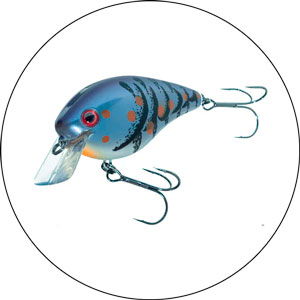
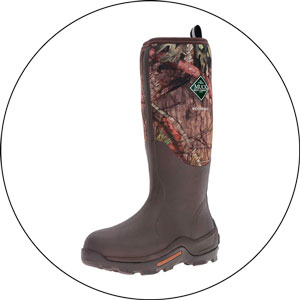
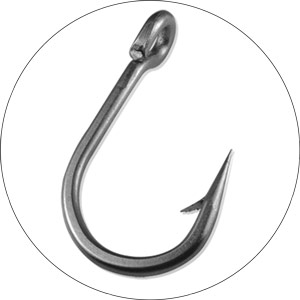


The step-by-step guide is practical and insightful. It simplifies the jigging process and demystifies the technique. The section on safety measures and ethical considerations shows that this guide is as concerned with the well-being of the angler and the environment as it is with the catch. Excellent read!
The comparison between vertical, horizontal, and slow-pitch jigging is enlightening. As someone planning to venture into the world of jigging fishing, this detailed and well-structured guide is just what I needed.
I must say, jigs are an incredibly versatile lure. Personally, I’ve found them effective in a range of situations – you can swim them, bounce them, drag them, even dead stick them, and they tend to work remarkably well. A strategy I often adopt involves using a skirted jig with a crawfish trailer attached, then fishing it slowly on the bottom. I’ve had some success with this method.
Also, I love how you can mix things up with jigs; you might try a couple of light twitches, lift your rod up and let it fall to the bottom, or even tighten up the line and shake the rod tip. There’s plenty of room for experimentation, which is part of the fun!
As a beginner, the depth and breadth of information in this article are invaluable. From understanding the water conditions and fish behavior to the step-by-step guide on jigging, every part of the process has been covered comprehensively. Excited to put these tips into practice!
In my experience, having a jig tied on whenever I’m out on the lake has always paid off. In fact, it’s typically the first bait I start my day with. From what I’ve observed, the best way to fish a jig is with a quick approach. If bass is around, it will usually strike either during the initial drop or within the next lift or two.
Here’s how I usually fish a jig: I aim for a low pitch to the water and apply just enough pressure so the bait almost hovers at the target, then I let it drop. I know some anglers prefer to give the jig slack line during the fall, but in my opinion, you lose a lot of the feel this way.
So, when I’m fishing in water that’s 5 ft or less deep, I let it pendulum towards me. It only swings back about 8 inches due to the slack line created when it hits the water. This is certainly not a straight drop, but it’s also not enough to deter a bass from biting. If I don’t get a bite on the drop or during the standstill, I lift the rod tip about a foot and let it drop again. If there are no bites after that, I’ll lift, shake while lifting, and then drop again. I usually keep my pauses brief, around 4-5 seconds, before moving them again.
I’ve noticed that if a bass bites during the initial drop, you can usually skip the other steps unless you strongly suspect there’s a bass lurking around. If the bite happens during a pause, I would recommend downsizing your jig and fishing very slowly. No sudden hops or shakes, just a steady lift, fall, and pauses. If a bite occurs during the shake, something smaller like a jigworm tends to bring more success.
Having been a casting fisherman for a few years, I was always intrigued by jigging. This article has given me the confidence to try this new method. The clear breakdown of the equipment needed, the how-to, and the safety precautions are all incredibly valuable.
From my perspective, traditional jigging, which uses large jigs and heavy tackle, is designed to imitate a fleeing or injured bait fish, targeting larger predatory species. Micro jigging, on the other hand, replicates a smaller bait fish, which can be a game-changer in areas populated by smaller predators.
I’ve noticed that when you’re specifically aiming for big kingfish, using a large jig totally makes sense. However, if your usual fishing spot is teeming with smaller predatory fish, it’s logical to scale down the size of your jigs as well as your tackle. What I’ve discovered is that once you begin to downsize your jigs, you’re introducing yourself to a whole new universe of smaller, yet equally voracious, predatory fish that are lurking beneath you, ready to attack the perfectly sized micro jig!
A superbly written article that not only shares the how-to of jigging fishing but also delves into the rich history of the technique. I also loved the part about the ethical considerations and adherence to local fishing regulations, this is so important and often overlooked in other resources I’ve seen.
One aspect of micro jigging that’s critical to understand, especially when using very light jigs, is the thickness of your line. I’ve found it’s more about the thickness than the actual poundage. A thick line can impede a micro jig’s ability to reach the bottom in a swift current.
To any newcomers out there, I would say, don’t fear using a thinner line. It’s quite ironic, but many beginners hesitate to use thinner lines and end up missing the moment when the jig touches the bottom.
I recall facing this exact problem the first time I went fishing. I could only watch as everyone around me was reeling in fish while I struggled. The moment you start getting a feel for the jig is when you can consider slowly increasing your line’s poundage or thickness, if necessary. If not, my advice would be to keep it as thin as you possibly can. Trust me, you’ll see the difference!
This article does a fantastic job of breaking down the ins and outs of jigging fishing. I’ve always found it a bit intimidating to try new fishing techniques, but this guide has definitely made the concept of jigging fishing much more approachable. I look forward to giving it a try.
I’ve found that jigging has quickly become one of the most enjoyable and effective methods for catching halibut and other bottom-dwelling fish. Interestingly, I notice I receive far more strikes than I do when simply bait fishing.
In my approach, I allow the jig to descend all the way to the seafloor. Once it makes contact, I take up the slack line until my rod tip is just a foot above the water. This setup helps me gauge how far off the bottom I am during the jigging process. I then give the jig a rapid lift of around 2-3 feet, up to waist level, before giving the jig a slack line to return it back to the bottom.
The fluttering descent seems to incite something in the fish – they often strike the jig as it’s making its way down. On the subsequent upward jigging movement, I can usually feel the weight of the fish and set the hook! It’s an exhilarating method and one I’d recommend to fellow anglers.
A comprehensive and well-detailed guide on jigging fishing! I particularly appreciated the discussion on the different rods and jigs suitable for specific conditions and types of jigging. The guidance provided here is practical and easy to follow. Can’t wait to apply these techniques on my next fishing trip!
It seems like the original poster enjoys using both metal and soft-bodied jigs for catching halibut and other bottom-dwelling fish species. They mentioned that their preference leans toward flashy and fluttering jigs. Their collection consists of 7-oz Crocodile spoons with chrome and rainbow tape, large white Buzz-Bombs, 14-oz Videke cod jigs in chrome, and 9-oz Spinnows in green “magic” finish.
Recently, they’ve started casting their own 16-oz bullet-style jig heads using a mold, compatible with a 12/0 Mustad O’Shaughnessy style hook. This spring, they managed to make 50 jig heads. To complete these jigs, they add 12″ Big Ugly Lure scampi tails and 8″ Berkely Power Grubs. Their chosen colors are typically white or glow-in-the-dark.
The cost of the scampi tails ranges between $2.25 and $3.00 each. They prefer Power Grubs due to their superior performance but find them a bit pricey at $4 for a pack of two. Plus, the softness of these grubs makes them prone to damage. It seems on a successful fishing trip, the original poster can go through as many as 12 Power Grub tails.
They have an upcoming fishing trip targeting Halibut and King Salmon. They have a history of catching impressive fish, with the biggest haul on their boat being Halibuts weighing between 70 and 80 pounds. However, their brother outdid them by landing a 115-pound Halibut on a charter last year.
In summer, it’s not uncommon for them to spot numerous 100-plus pound fish and a few over 200 pounds at the docks. The topic of retaining “trophy” fish stirs much debate, and they shared an article from Fish Alaska magazine that says sport fishing contributes minimally to the number of trophy Halibuts killed annually compared to commercial fishing. The biggest catch they heard of was a 500-plus pound monster caught by a commercial boat last year.
Despite the ongoing debate, they admitted that they would likely keep the first “monster” fish they catch for pictures but afterward would consider releasing them, favoring the smaller, more tender ones for consumption.
Fantastic article. I love the clarity with which the various techniques and different types of jigs have been explained. It’s very important to be versatile with your techniques and adapt to the species you’re targeting, and this article provides just that!
I’ve been fishing for years and always wanted to try jigging. Thanks for providing such a comprehensive guide. The history of jigging and the evolution of techniques are fascinating. Also, it’s good to see some focus on the importance of reading water conditions and understanding fish behavior.
Wow, this article is a great resource for anyone interested in getting started with jigging fishing. As someone who has dabbled in fishing but never tried jigging, I find the step-by-step guide incredibly helpful. I also appreciate the section on safety measures and ethical considerations – responsible fishing is so important!